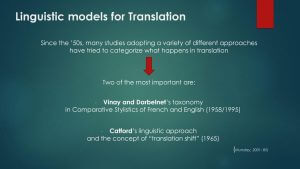Before discussing the explanation of translation concepts, it is very important to highlight and state one of the salient distinctions between human beings and other species, in respect that human can communicate and transfer messages via language, highly ordered as well as structured and organized signs and symbols, which is too much complex in its structure and form. As there is a set of rules and elements which relate symbols to their meanings, a language can be considered an instrument for humans so they can form a large number of utterances from a fixed set of elements. Though, these specific elements, principles, and rules may vary among multiple regions to such extent that we can identify thousands of different languages across the globe, although all the systems serve to establish the communication between group members who can understand those elements and rules and use them to communicate with each other. In 2009, The Ethnologue, known as an encyclopaedia of languages listed 6,909, different languages are spoken all over the world. Though, if someone tries to reach the border of his native language and go through into the communication with any individual who is unaware of that language the communication and transmission of messages will be slow.

How translation behaves like a process?
Translation is a process that converts thoughts, feelings, messages, orders or other verbal sentences expressed in a language into another language of same value and meaning. Different languages use specific names for this process, but the names indicate that the process consists of transmission and conversion of messages for the people who rarely use source language and are not able to understand the message without transmission and conversion processes into the system. It is very important to know the fact that translated to be content is not simply the elements, that are being replaced with elements of other target language system, but is should be translated in a way to express a message.
How translation behaves like a product?
In the field of translation, another term product is also implied and it is considered that translation is also a product itself. It is a translated material or product that the translators produce. Douglas Robinson states “Translation is different things for different groups of people. For those who are not translators, it is primarily a text; for people who are, it is primarily an activity.” To understand the concept the following distinction between both the process and product should be considered.
Translation studies:
Translation is a broad concept which can be explained in many ways. For example, some may say that translation refers to a process or a product, and then describe its subtypes, i.e. technical translation, literary translation, subtitling and machine translation. In other definition, it could be referred to as transferring written text, also including interpretation. Knowing about the history is also very important, oral translation is older than written translation because most of the language were just spoken primarily. Both the types helps in the development of human culture as well as their civilization.
After above-discussed definitions or explanation, it can understand that the term translation refers to both a process and a product, depending upon the way of describing it. It is a process because it involves values and elements of a language that are being translated into other languages of the same elements and values. On the other hand, it can also be considered as a product because there is a material that is going to be translated and after translation, the final result is also in material or product form.

